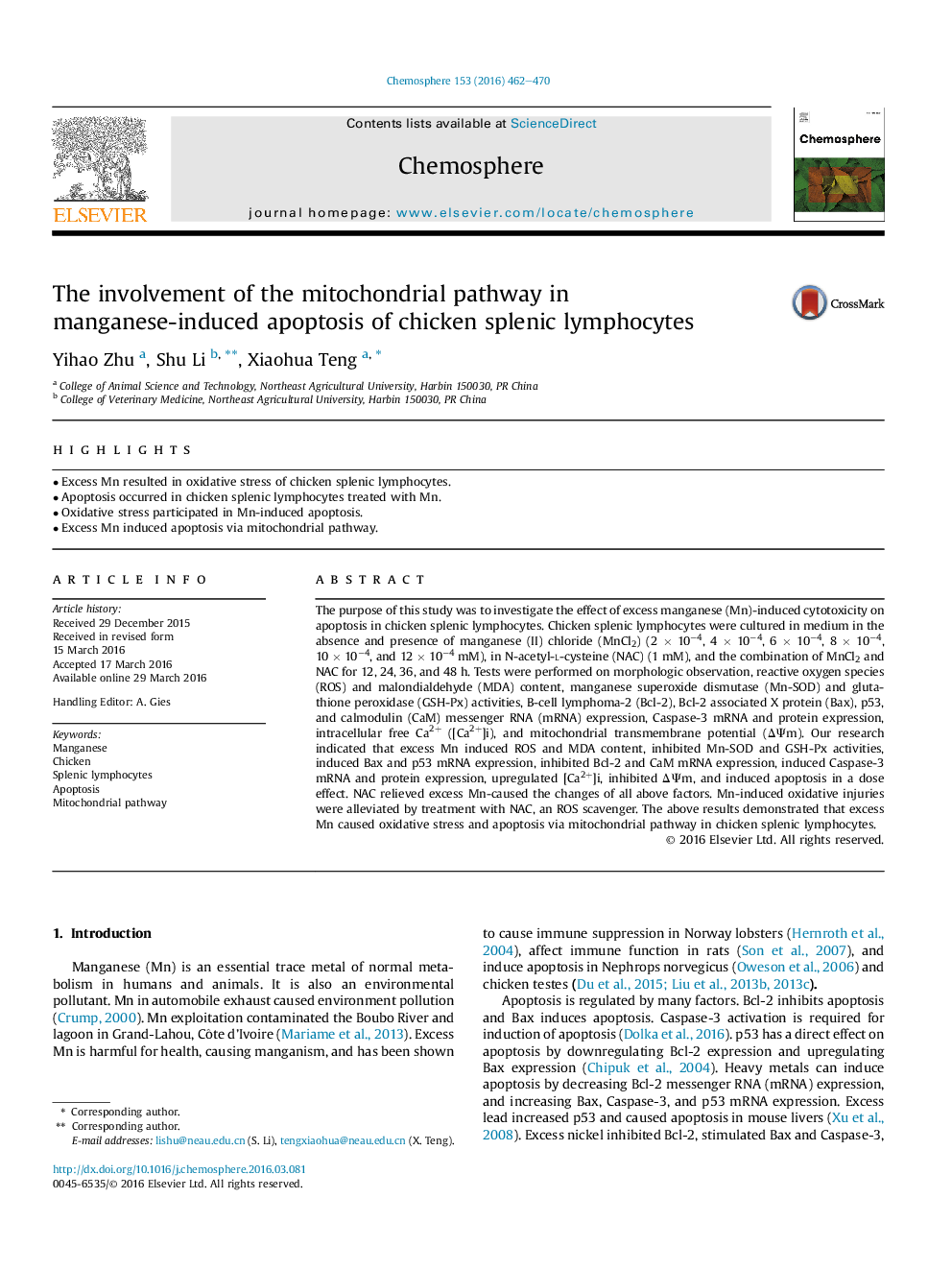| Article ID | Journal | Published Year | Pages | File Type |
|---|---|---|---|---|
| 4407665 | Chemosphere | 2016 | 9 Pages |
•Excess Mn resulted in oxidative stress of chicken splenic lymphocytes.•Apoptosis occurred in chicken splenic lymphocytes treated with Mn.•Oxidative stress participated in Mn-induced apoptosis.•Excess Mn induced apoptosis via mitochondrial pathway.
The purpose of this study was to investigate the effect of excess manganese (Mn)-induced cytotoxicity on apoptosis in chicken splenic lymphocytes. Chicken splenic lymphocytes were cultured in medium in the absence and presence of manganese (II) chloride (MnCl2) (2 × 10−4, 4 × 10−4, 6 × 10−4, 8 × 10−4, 10 × 10−4, and 12 × 10−4 mM), in N-acetyl-l-cysteine (NAC) (1 mM), and the combination of MnCl2 and NAC for 12, 24, 36, and 48 h. Tests were performed on morphologic observation, reactive oxygen species (ROS) and malondialdehyde (MDA) content, manganese superoxide dismutase (Mn-SOD) and glutathione peroxidase (GSH-Px) activities, B-cell lymphoma-2 (Bcl-2), Bcl-2 associated X protein (Bax), p53, and calmodulin (CaM) messenger RNA (mRNA) expression, Caspase-3 mRNA and protein expression, intracellular free Ca2+ ([Ca2+]i), and mitochondrial transmembrane potential (ΔΨm). Our research indicated that excess Mn induced ROS and MDA content, inhibited Mn-SOD and GSH-Px activities, induced Bax and p53 mRNA expression, inhibited Bcl-2 and CaM mRNA expression, induced Caspase-3 mRNA and protein expression, upregulated [Ca2+]i, inhibited ΔΨm, and induced apoptosis in a dose effect. NAC relieved excess Mn-caused the changes of all above factors. Mn-induced oxidative injuries were alleviated by treatment with NAC, an ROS scavenger. The above results demonstrated that excess Mn caused oxidative stress and apoptosis via mitochondrial pathway in chicken splenic lymphocytes.
